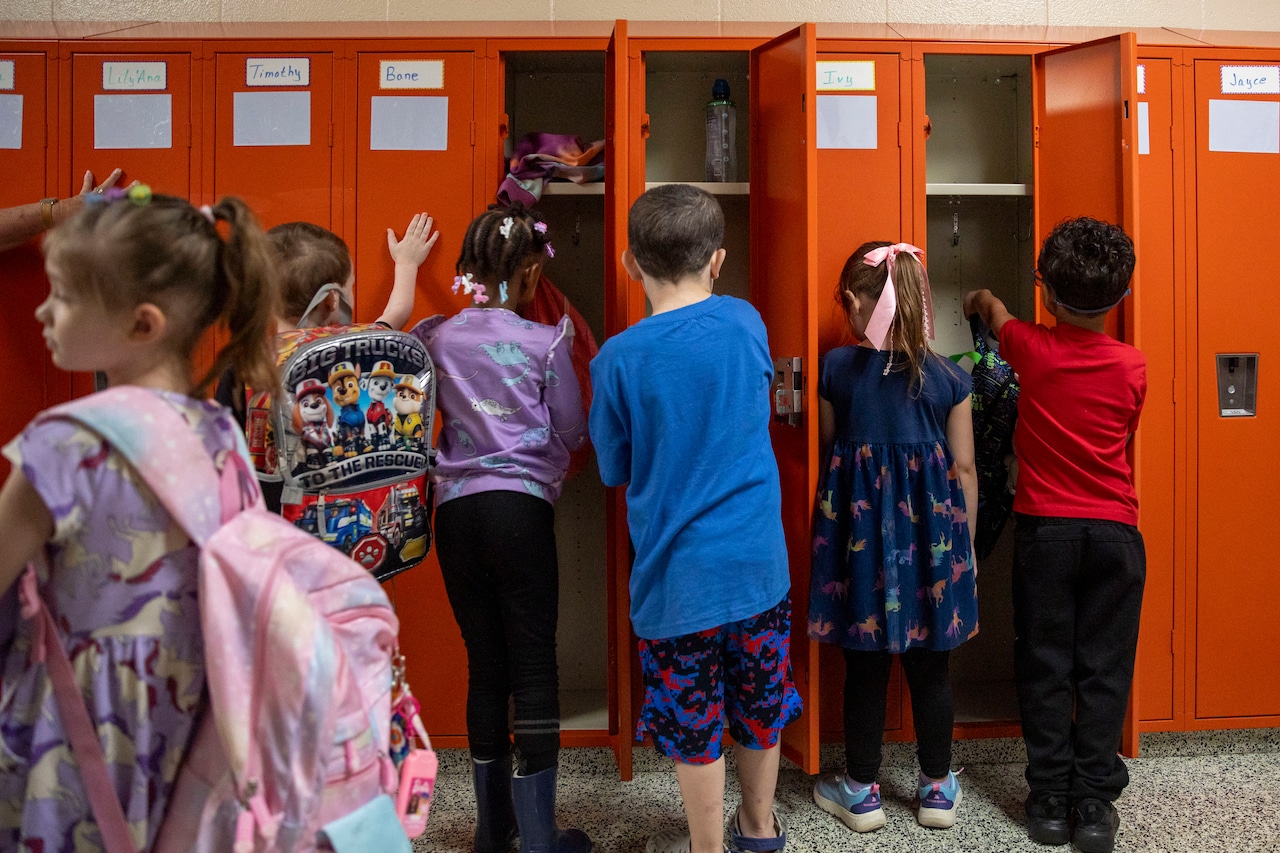
LANSING, MI – A 4.6% hike in general per-student funds, the restoration of $321 million for mental health and safety needs and covering school meal costs for Michigan’s K-12 students were among the hallmarks expected to appear in this year’s school spending plan.
A school aid omnibus bill was pushed through a state Senate conference committee late Thursday, Oct. 2, ending the second day of Michigan’s 2025-26 fiscal year without an adopted budget. But as of 10:30 p.m., it had not received the final green light.
News of a budget deal first took shape earlier this week ahead of the Oct. 1 deadline, and a funding extension passed early Wednesday covered state lawmakers as they worked to pass a package, while also preventing a government shutdown.
The school spending portion was initially pushed through by state House lawmakers Wednesday, and by midday Thursday, some officials began to sparsely share details.
A Senate conference report on the measure, Senate Bill 166, released late Thursday outlined a $21.29 billion school aid budget for this year — roughly half a billion more than last year.
“Obviously no budget document is a perfect document,” said state Sen. Darrin Camilleri, D-Trenton, who introduced the school omnibus. Legislators, he said, were “excited about the ability of our schools to have the stability that they all need and deserve.”
Biggest school aid items at least ensure continuity, advocates say
The 4.6% per-student hike marked a roughly $400 increase from what was allocated last year, going from $9,608 to $10,050.
Although some lawmakers touted the increase as a “record” amount on social media Thursday, responses were mixed on what it meant — and if it was enough — for schools.
Molly Sweeny, a co-chair for the Michigan Education Justice Coalition and director of organizing for 482 Forward, a Detroit-based education advocacy group, called the wording “inaccurate language.”
“The deal that’s going to be made is not going to be record funding. … You have to take into account inflation, right?” she said Thursday. “Inflation was really important, and we really want our legislators to be honest with the Michigan public that this is not record funding. We need more, and we need to do better.”
According to the Education Policy Innovation Collaborative at Michigan State University, per-student revenues remain below the state’s early-2000s peak when adjusted for inflation.
In one study, released in September, the institution noted the decline in unrestricted funding and a rise in restricted funds with the per-pupil foundation allowance falling from 95% of combined state and local funds to 67% between 1994-95 and 2023-24 — largely in favor of categorical grants.
The funding is broken up by categories in school aid packages in areas like rural transportation or support for English-language learners and proved to be among the biggest difference between budget proposals passed separate by House Republicans and Senate Democrats earlier this year.
It was also much of those need-specific funds that some school advocates said needed more scrutiny once the full 2025-26 school budget bill was released with concerns over how they’re distributed and what oversight looked like.
“The devil’s in the details on this one,” said Jennifer Smith, director of government relations for the Michigan Association of School Boards.
Still, Dan Behm, executive director for Education Advocates of West Michigan, said the per-student increase was a “welcome boost” in the “single largest item in the K-12 budget.”
“This will help schools cover the costs of inflation, continue to make investments in quality instruction,” he said via email late Thursday, “and retain skilled and dedicated teachers and staff members.”
Like general foundation per-student funds, mental health and safety funds are also allocated on a per-student basis but as a separate, one-time allocation. Coming out of the COVID pandemic, funds previously helped schools hire psychologists, social workers and counselors or school nurses, access behavioral health clinicians and coordinators, and address costs associated with school mental health needs and threat assessments.
In 2024, that area of funding also became a partisan sticking point after hundreds of millions were cut from the 2024-25 state budget, initially leaving just $25 million.
House Republicans advocated for returning the more than $300 million for mental health and safety in September last. Democrats later supported re-appropriating an additional $125 million to restore half the funds.
Smith said keeping a high allocation of mental health and safety funds helped schools better plan to accommodate the wellbeing of students.
“We can use it for things we need, but if you don’t know what’s going to be there year after year, it’s hard to hire people or sign long-term contracts,” she said. “So, that continuity becomes really important. It’s part of the reason this delay is so hard.”
Gov. Gretchen Whitmer has been outspoken about supporting the continuation of universal free mealsv for all Michigan K-12 students.
Breakfast and lunch have been funded with a combination of federal dollars and the state-financed Michigan School Meals program for the last two years. But only one of the budget proposals from state lawmakers earlier this year would have maintained the program, leaving only free and reduced meals for eligible low-income students through the U.S. Department of Agriculture.
In the latest spending plan for 2025-26, school meals would receive an appropriated $201.6 million.
“Schools are grateful for the clarity and support in funding students’ breakfast and lunch,” Behm said Thursday. “This investment ensures that no children are distracted by hunger as they learn throughout the day.”
Other notable priorities in the school spending plan:
$65 million in a competitive grant program for districts to reduce class sizes. This was addressed in Senate Democrat measures earlier this year with the aim to help four districts in a pilot effort year keep class sizes in kindergarten through third grade at an average size of 17 to 19 students.
$258.7 million more at-risk student supports, marking a 25% increase to $1.3 billion
Additionally 25% more for English-language learners with $12.55 million more for $62.7 million total
Retention of $70 million for career-technical education programs in “CTE deserts,” $100 million for school infrastructure grants,



